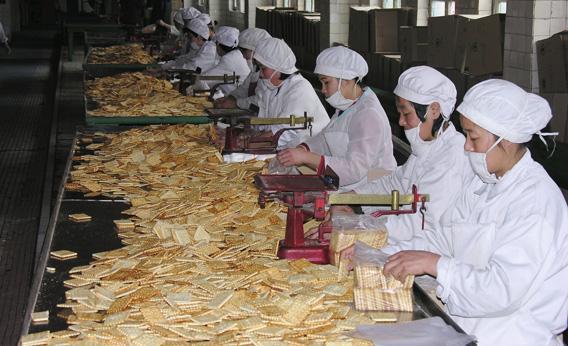North Korea has agreed to suspend its nuclear development in return for food aid. The country suffers from chronic food shortages and periodic famine, even though neighbors China and South Korea haven’t had such problems for many years. Why are the North Koreans always going hungry?
Poor growing conditions, fertilizer shortages, and general mismanagement. On the most basic level, the terrain and climate in North Korea aren’t great for farming. The country is mountainous, and the growing seasons are short. (North Korea is at approximately the same latitude as New England, but prevailing air currents make it even colder.) In defiance of nature, North Korea’s isolationist leaders decided in the 1950s that domestic farmers had to fulfill all the country’s food needs. They instituted intensive agricultural practices to maximize yield from their limited arable land, relying on heavy irrigation and copious pesticides, herbicides, and fertilizers. They scraped by for decades with only occasional famines, but the system totally collapsed in the 1980s, when the Soviet Union cut the supply of subsidized fossil fuels, from which many of the DPRK’s agricultural chemicals are derived.
When crop yields declined, the government tried to plug the gap by increasing acreage. They stripped hillsides of all natural vegetation and tried terraced agriculture. It worked for a little while, but heavy seasonal rains eventually eroded the new farms and filled the nation’s rivers, reservoirs, and irrigation canals with silt. Eventually, the land was no longer able to absorb the water from annual monsoons, and flooding became a chronic problem.
Even though the program to expand arable land failed miserably, North Korean leaders thought their mistake was not going far enough. Kim Jong-il is said to have supported a plan to bulldoze the entire country, in an attempt to turn mountains into fertile plains. Kim figured that the plan would both increase agricultural production and further the national ideal of perfect uniformity among citizens. Since farmers would no longer have been able to say their families had been farming the area between two hills for generations, they would lose any sentimental attachment to the land. Fortunately, Kim never had the resources to implement the great flattening.
Analysts say new leader Kim Jong-un has several options to ease the food shortage. North Korea has an enormous supply of literate citizens willing to work for cheap. The best long-term solution is to reorient the country’s economy toward light manufacturing, enabling it to trade goods for food. That’s what South Korea does, and it hasn’t experienced significant food shortages in four decades. But the Hermit Kingdom is very unlikely to adopt its neighbor’s economic model anytime soon.
Alternatively, the state could loosen its control over farmers. North Korea characterizes its farming system as cooperative, but it’s more appropriately termed as Stalinist. The government tells farmers what to plant, how much to plant, and when to plant it. A state-owned truck rolls through the land at set dates, spreading fertilizer onto the fields. At the end of the season, another government truck arrives to collect the harvest.
The state allows farmers to cultivate a small private plot on the side. They grow whatever they want, and can sell their beans, cabbage, peppers, and other vegetables in the market. Observers say the privately operated plots are invariably more productive than the government-managed farms, suggesting strongly that allowing farmers to make their own decisions would help ease the food shortage. Although it’s not clear whether even free-market farming could fulfill national requirements without imports.
Got a question about today’s news? Ask the Explainer.
Explainer thanks Stephan M. Haggard of UC-San Diego and Marcus Noland of the Peterson Institute for International Economics. They are co-authors of Witness to Transformation: Refugee Insights into North Korea.
Video Explainer: Do Airplanes Dump Their Waste During Flight?
